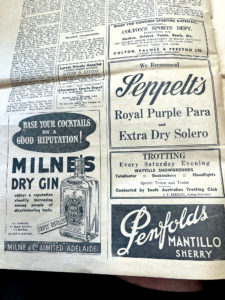Big is not always best
Opinion
In a fiery ‘intervention’ at the Plenary council, Archbishop Anthony Fisher OP urged Catholic Australia to “wake up to the flood of non-practice” and the “pandemic of moral confusion”.

“Wake up: the vocational grounding of the Church is shaking,” he said. “Sacramental marriage is in free fall…Religious are an endangered species.”
Stirring stuff, and accurate, but I’m not sure telling Catholics to ‘wake up’ is going to work. For a start, those listening to Archbishop Fisher have probably already ‘woken up’ and those Catholics who aren’t in earshot have long stopped caring.
While it’s tempting to put a rocket up the many baptised Catholics no longer practising their faith, we have to be realistic and also accept that when the Catholic Church was at its strongest and loudest, it wasn’t always at its best.
Advertisement
Some of the younger members of the Plenary Council challenged the notion of looking back nostalgically to the time when the pews were full and the Church was more influential, pointing to child sex abuse, the Stolen Generations, domestic violence and forced adoptions as the other side of the equation (The Interventions, page 14).
That’s not to say the Church was alone in its culpability but it does make one wonder if perhaps being smaller (in number), less powerful and more humble might have its advantages.
This viewpoint gained some traction when I met with the small community of the Daughters of Charity in Adelaide recently and heard about Sr Ratana’s impressive work in the predominantly Buddhist Thailand (story page 8).
While Catholics make up only 0.5 per cent of the population, the Church and religious orders are by all accounts highly respected for their services in health, education and social welfare. This has given Catholics like Sr Ratana a place at the table of government and business officials.
For the Daughters of Charity in particular, that respect was initially earned through their work with lepers and their expertise in dealing with communicable diseases such as HIV/AIDS which has developed into sustainable and inclusive development projects.
In Adelaide, whenever the Sisters tell people they are Daughters of Charity, they get a blank look until they mention the Hutt St Centre, established in 1954 after the first Daughters to come here found a number of men living in the parklands and nearby rooming houses.
Since then the Sisters have worked in parishes and other community services, but it is their presence at the Hutt St Centre and their work with the homeless that has endeared them to so many.
The Daughters of Charity are a shining example of the importance of being authentic in the expression of our faith, in truly living out the Gospel and serving those on the margins.
Similarly, some of the most vibrant Catholic/Christian com-munities are located in remote places of the world where often just a few missionaries were prepared to live amongst the indigenous people, learn from them and give assistance where it was needed. Pope Francis’ call for us to be a missionary Church is modelled on this approach.
Advertisement
Being Catholic in Australia is no longer a birthright; once a Catholic always a Catholic doesn’t really cut it anymore.
We don’t need to be big to have a place at the table; we just need to re-earn the trust of the wider community through our actions and genuine commitment to our faith.
As Archbishop Fisher told the Plenary Council, we can build on the many strengths of the Church: “Alert to what should alarm us, but confident in God’s grace, we can respond to the signs of our times – with intelligence and humility patience and hope, compassion and fidelity.”
Looking back
While on the topic of past glories and present day reality, a Centacare staff member recently gave me an old copy of The Southern Cross that her mother came across during a clean-up of her home.
It was the Christmas edition of 1940, complete with nativity scene on the front page and full page advertisements for John Martin’s, Foys and Harris Scarfe. Capitalism was alive and well in the Catholic community of the forties.
Sadly, there were a number of war-related articles amongst the regular coverage of local parish, school and sporting events.
 But what surprised me most was the number of advertisements for alcohol – from Cooper sparkling ale and stout ‘brewed in the old English style’ to Seppelt’s Royal Purple Para and Extra Dry Solero and Penfold’s Mantillo Sherry.
But what surprised me most was the number of advertisements for alcohol – from Cooper sparkling ale and stout ‘brewed in the old English style’ to Seppelt’s Royal Purple Para and Extra Dry Solero and Penfold’s Mantillo Sherry.
Tintara Wines, West End Double Stout and Milne’s Dry Gin also featured, suggesting the average Catholic was a discerning consumer of a variety of beverages.
These days, we don’t have any adverts for alcohol in our paper (happy to consider if you’re in that line of business) but I’m pretty sure most Catholics still enjoy a tipple.
I guess it shows how important it was for busi-nesses to align themselves to the Catholic brand back then. Not that I’m getting nostalgic…








Comments
Show comments Hide comments